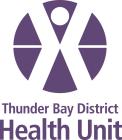Vascular Access
Purpose and scope
The purpose of this best practice guideline (BPG) is to provide nurses (nurse practitioners, registered nurses, registered practical nurses and nursing students) and other members of the interprofessional team with evidence-based recommendations and resources related to the insertion, assessment and maintenance of vascular access devices (VADs) in the infant (0–1 year), pediatric (1–18 years) and adult populations (18 years and older).
This guideline is applicable to all practice settings where care is provided for persons with VADs such as, but not limited to:
- primary care
- rehabilitation
- long-term care
- acute care, and
- community care.
Caution note: As with all procedures, health providers must be aware of scope of practice and follow regulatory body guidelines. Health providers should only be caring for or inserting VADs for which they have the necessary knowledge, skill and judgement. Health providers should also follow organizational policies and procedures related to VAD insertion and maintenance. This BPG addresses recommendations requiring advanced skill.
Get started
Who's using this?
Registered Nurses’ Association of Ontario (RNAO). Vascular access. 2nd ed. Toronto (ON): RNAO; 2021.
Recommendations
Do you want to learn about and implement the most- up-to-date evidence-based recommendations on this topic with your colleagues? Download and share the full best practice guideline (BPG), Vascular Access.
See below for a snapshot of the recommendations from this BPG. We strongly suggest you review the full BPG before implementing the recommendations and good practice statements. The BPG also includes further resources to support implementation and evaluation.
Good practice statement: The expert panel recommends health providers complete a systematic assessment of the person prior to inserting a vascular access device.
Recommendation 1.1: The expert panel recommends that health providers provide comprehensive health teaching to persons and their families/caregivers about their vascular access device.
Recommendation 2.1: The expert panel recommends health-service organizations implement practical education on the insertion and/or management of vascular access devices for health providers.
Recommendation 3.1: The expert panel suggests that acute care health-service organizations implement vascular access specialists or vascular access specialist teams to support the insertion and management of vascular access devices.
Recommendation 4.1: The expert panel suggests health providers perform venipuncture when drawing blood samples to maintain specimen integrity.
Recommendation 5.1: The expert panel recommends that acute care health-service organizations implement a multi-component peripheral vascular access device care protocol. This protocol includes a minimum of a daily review by health providers, in collaboration with persons and their families.
Recommendation 6.1: The expert panel recommends that health providers use ultrasound-guided technique for the insertion of peripheral arterial catheters.
Recommendation 6.2: The expert panel suggests that health providers use ultrasound-guided technique for the insertion of peripheral vascular access devices in persons with difficult intravenous access.
Recommendation 7.1: The expert panel recommends that health providers offer adults nonpharmacological and pharmacological pain management strategies during the insertion of a vascular access device.
Recommendation 7.2: The expert panel recommends that health providers offer non-pharmacological and pharmacological pain management strategies during the insertion of a vascular access device to infants and children, tailored to their age and developmental stage.
Disclaimer: These guidelines are not binding for nurses, other health providers or the organizations that employ them. The use of these guidelines should be flexible and based on individual needs and local circumstances. They constitute neither a liability nor discharge from liability. While every effort has been made to ensure the accuracy of the contents at the time of publication, neither the authors nor the Registered Nurses’ Association of Ontario (RNAO) gives any guarantee as to the accuracy of the information contained in them or accepts any liability with respect to loss, damage, injury or expense arising from any such errors or omission in the contents of this work.
Revision status
Current edition published: June 2021
This BPG replaces two of RNAO's BPGs Care and Maintenance to Reduce Vascular Access Complications (2005) and Assessment and Device Selection for Vascular Access (2004).
Help shape BPGs
Contact
Contact us for any questions.


